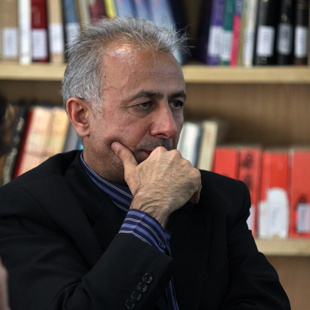Saudi Efforts for Armed Conflict with Iran

Iran and the Persian Gulf countries are and will remain in a distinctive place. “Distinction” is one of the main issues in security discussions. Whenever ideological forms are combined together, the ground becomes more prepared for conflicts. This issue is mostly seen in the current situation in the Persian Gulf. The same situation was witnessed during the first months after the Iranian revolution. A change in America’s tone regarding Iran shows the convergence of ideologies in the regional and international sphere.
The movements and positions do not reflect a normal situation. The main reason for this is cognitive changes occurring in the US since 2006, especially after Valiollah Nasr wrote the “The Shia Revival”. Mr. Nasr is a member of the Council on Foreign Relations in the US, and has been among the Obama administration’s regional consultants. Until 2006, the US security framework was formed according to a rising Shiite identity. The Americans believed that the formation of authoritarian structures within the region, such as Egypt, have created skepticism with respect to the US. And terrorism is the brainchild of these skepticisms.
The manifestation of these thoughts can be seen in Graham Fowler’s works. He has said that the US can create balance in the region if marginalized groups come to the surface. That is why when the US invaded Iraq the concept of a “Greater Middle East” was floated. In this democratization process, the Shiites in the Persian Gulf countries could cause security problems for the US. From 2003 to 2006 regional developments picked up their pace. This increase in developments not only worried Arab countries, but also the US and Israel, and resulted in a change in the balance of power in the region. Whenever the balance of power shifts, inevitably there will be conflicts and wars. Since then the issue of the “Greater Middle East” lost its functionality. Since 2006, we have been witnessing the convergence of ideologies regionally and internationally. Radicalism in Iran has also influenced regional developments. From 2006 onward we see a call for the balancing of threats, and the threatening force is Iran. Iran has some governmental and non-governmental regional allies, though.
The discussion of identity and polarity indicates that the balance of power should shift from Iran to another country, a country seemingly defined as Saudi Arabia. Since 2006 arms sales to Saudi Arabia, the UAE, and other Arab countries, has increased. This becomes more impactful to Iran when it is hit by the global economic crisis, as a result of a reduction in oil prices.
It is within this atmosphere that Arab countries entered the lobbyist equations of the US. Research institutions were formed in the US in reference to this process. As a result, when Hillary Clinton became a presidential candidate, she was supported by the Al-Sauds. Hillary is the symbol of the Arab lobby in the US. The Arabs are strengthening their infrastructures, and as a result Saudi Arabia, which was dependent on Egypt and Pakistan for providing its security, is now the regional policeman. The truth is that Saudi Arabia was able to shift the balance of power in its own favor.
Iran proved that its approach in not a long-term one when it committed a strategic mistake in Iraq’s election, and did not support Prime Minister Maleki in the first round. The developments spreading from North Africa to Yemen have traces in Iran’s Islamic revolution. Zbigniew Brzezinski also believes that Iran’s revolution was a turning point in the region. The Mediterranean countries are less influenced by Iran’s revolutionary ideology because of they lack a radical atmosphere. This ideology, though, grew in paradoxical places and is evident in Saudi Arabia, Bahrain, and Yemen.
The issue of Syria is of importance as well. Our approach to Syria shows that our foreign policy apparatus suffers from a lack of understanding. We witnessed this in 2003 when our foreign ministry thought that the US would not invade Iraq. But in the current atmosphere, the US defines the main axis of conflict as Syria and Iran. This can be seen in their conduct in Syria. In addition, they have brought up the issue of additional sanctions under which even countries that trade with Syria will be affected. Saudi Arabia plays a great role in this game as well; they are ready to place Iran in an armed conflict situation.
Now, the question is why the Israeli approach has changed toward the region. Tel Aviv is watching the Saudis play their game. That’s why in the case of Syria, Prime Minister Netanyahu announced that a known enemy is better than an unknown angel.
With regards to Iran, Israel, which tried to involve the US in Iran’s nuclear dossier until 2009, is now taking a different approach.
The game the US played with Iraq will be replayed with the Saudis. The game with Iran is also continuing on different levels, and today the question for the US is whether more pressure will result in a fracture, or an increased amalgamation in Iran.

